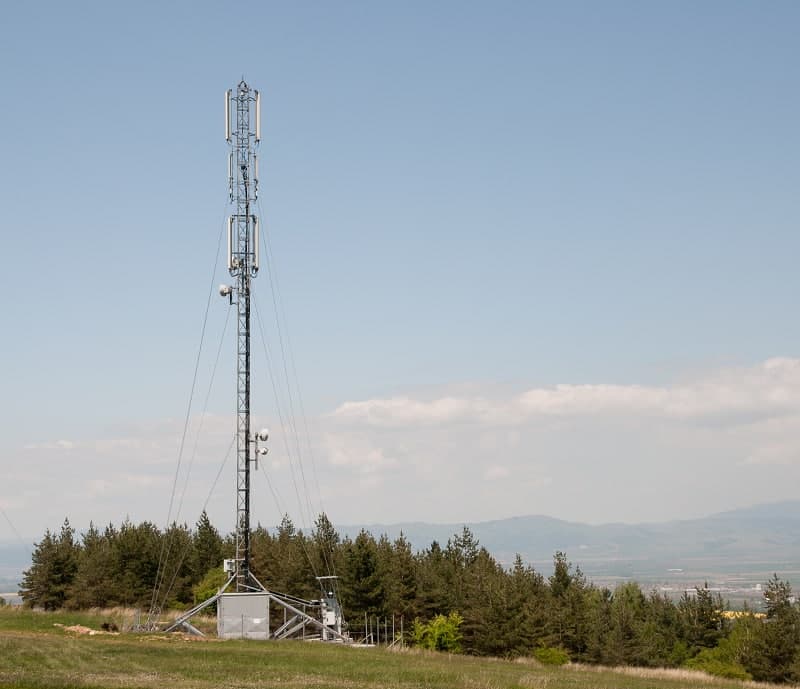Multiplexing is the process of combining multiple signals into one signal, over a shared medium. If analog signals are multiplexed, it is Analog Multiplexing and if digital signals are multiplexed, that process is Digital Multiplexing. There are several multiplexing techniques among which Time-division multiplexing found its most common application in digital telephony. In this article, we will discuss what Time Division Multiplexing – TDM is. keep on reading this new blog in Linquip to find out more.
A comprehensive look at multiplexing can be found on the Linquip website, which is one of the best sources of information on the topic. Dedicated electrical components experts are ready to answer any questions you might have regarding time division multiplexing. Before proceeding further, please take a few minutes to read Linquip’s article “What Is An Electrical Component?”.
Here’s your chance to become a Linquip Expert and receive a complete set of benefits that Linquip offers. Using this option, you can demonstrate your skills to potential employers exactly based on the industrial equipment you operate. Have you ever thought about writing a guest post for Linquip? In case you wish to do that, Linquip offers you the option to submit your content as a Guest Post to its platform.
What is Time Division Multiplexing – TDM?
Time-division multiplexing (TDM) is a communication process that transmits two or more streaming digital signals over a common channel. In TDM, incoming signals are divided into equal fixed-length time slots. After multiplexing, these signals are transmitted over a shared medium and reassembled into their original format after de-multiplexing. Both multiplexer and de-multiplexer are synchronized by a common clock to receive data following the transmit sequence.
Time Division Multiplexing Working Principle
As we can see in the figure below, source A, B, and C want to transmit data through a common medium. Thus, the signal from the 3 sources, is divided into multiple frames each having its fixed time slot. Here, 3 units from each source are considered, which jointly forms the actual signal.
A frame is transmitted at a time that is composed of one unit of each source. As these units are entirely different from each other, the chances of unnecessary signal mixing can be eliminated.
When a frame gets transmitted over a particular time slot, the next frame uses the same channel to get transmitted and the process is further repeated until the completion of the transmission.
Time Division Multiplexing Types
- Synchronous TDM
- Asynchronous TDM
TDM comprises two major categories that are described below.
Synchronous TDM
Synchronous TDM is primarily known as synchronous because each time slot is preauthorized to a continuing source. Synchronous TDM is a data transfer approach during which there may be a continuous flow of data signals followed by timing signals. It helps to support that the sender and therefore the receiver are synchronized with one another.
The time slots are broadcasted regardless of whether the sources have any information to transmit or not. Thus, for the benefit of the integrity of execution, the channel space is wasted.
In Synchronous TDM, a frame consists of one complete cycle of time slots. Thus, the number of slots in a frame is equal to the number of inputs.
The figures below indicate how the Synchronous TDM works.
Asynchronous TDM
Asynchronous TDM is called statistical division multiplexing. It is a method in which time slots are not permanent as in Synchronous TDM. Time slots are assigned to only those machines which have the information to send the data.
This transmission approach transmits one character or 8 bits at a time. In this approach, each character transfers the beginning bit before the transmission process begins. After sending the character, it also sends the end bit. With the character bits and begin and stop bits, the entire number of bits is 10 bits.
In Asynchronous TDM, a frame contains a fixed number of time slots. Each slot has an index of which device to receive.
The figures below indicate how the Asynchronous TDM works.
Time-Division Multiplexing Applications
TDM is mainly useful for analog and digital signals (but its processing technique allows the multiplexing of digital signals conveniently rather than analog ones) in which several channels with low speed are multiplexed into high-speed channels used for transmission. It finds its application mainly in a digital communication system, cellular radio, and satellite communication systems.
The major applications of time-division multiplexing are given below.
- It is used in ISDN (Integrated Services Digital Network) telephone lines.
- It is used in PSTN (public switched telephone network).
- It is used for some telephone systems.
- It is used in wireline telephone lines.
Time-Division Multiplexing Advantages
The main advantages of TDM are as follows.
- Simple circuit design.
- It uses the entire channel bandwidth for the transmission of the signal.
- The problem of Intermodulation distortion is not present in TDM.
- Pulse overlapping can sometimes cause crosstalk but it can be reduced by utilizing guard time. Thus, is not much serious.
- Time-division multiplexing systems are more flexible than frequency-division multiplexing.
- Time-division multiplexing circuitry is not complex.
- Full available channel bandwidth can be utilized for each channel.
Time-Division Multiplexing Disadvantages
The major disadvantages of TDM are as follows.
- The transmitting and receiving sections must be properly synchronized to have proper signal transmission and reception.
- It is Complex to implement.
- Due to slow narrowband fading, all the TDM channels may get wiped out.
So, now you know the answer to the question “what is Time Division Multiplexing – TDM?”. If you enjoy this article in Linquip, let us know what you think by leaving a reply in the comment section. We will be more than glad to have your viewpoint on the article. Is there any question we can help you through? Feel free to sign up on our website where our experts are prepared to provide you with the most professional advice.
What Are the Advantages of TDM Over FDM?
TDM uses the entire available bandwidth on a time-share basis, whereas FDM divides the band into multiple channels separated by guard bands, resulting in ineffective frequency utilization.
What Is an Example of TDM?
TDM can be seen in television broadcasts. Typically, a television serial runs for 10 minutes and is followed by a 5-minute advertisement. There is a dedicated frequency for the serial at the time it is being broadcasted.
Download What is Time Division Multiplexing – TDM PDF
We have made this article available in PDF format for individual download. You can access the PDF version by clicking the link below.
Buy Equipment or Ask for a Service
By using Linquip RFQ Service, you can expect to receive quotations from various suppliers across multiple industries and regions.
Click Here to Request a Quotation From Suppliers and Service Providers
Read More In Linquip:
- Difference Between FDM and TDM: Basic Points
- What is Multiplexing and Their Types? A Complete Guide
- What is Frequency Division Multiplexing – FDM: A Brief Review
- What Is CNC Machining & How Does It Work? (A Comprehensive Guide)
- What is Electrical Identification? (2022 Ultimate Guide)
- What is the Core Difference between Thermistor and RTD?
- What is a Paper Capacitor?
- What is Synchroscope? Method & Working Principles
- What is an Electrolytic Capacitor? Usage & Application
- What is Film Capacitor & What is it used for?
- What is Ceramic Capacitor Used for?
- What are Mica Capacitors? Comprehensive Overview
- What is an Electrolytic Capacitor?
- What is Inductor? Usage & Function | Linquip
- What is Redox Flow Battery?
- What is Ceramic Capacitor? A Basic Description
- What are the Different Types of Actuators?







